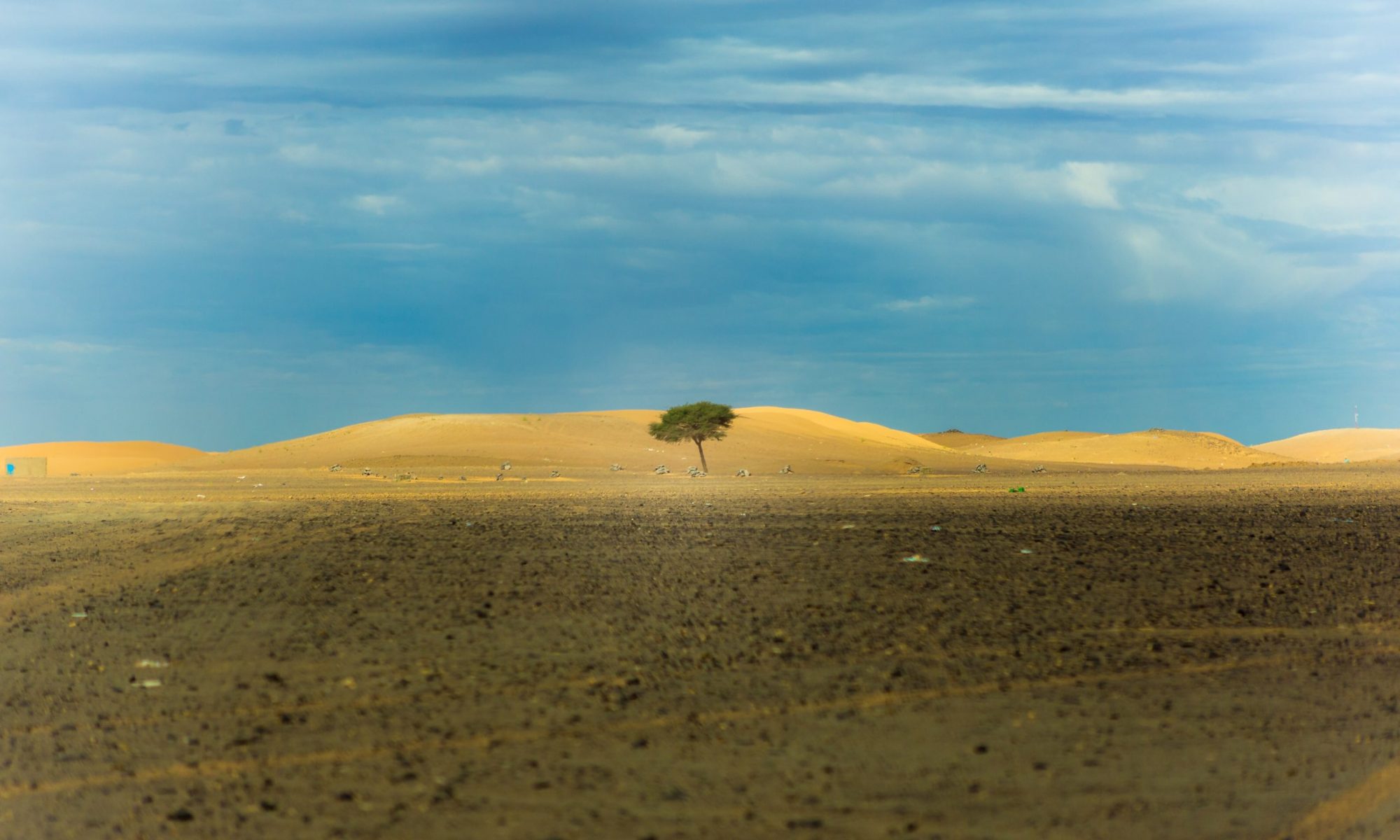Camellia Biswas, Doctoral Student, Humanities & Social Science, Indian Institute of Technology, Gandhinagar, India
You can find and download a PDF version of this Essay at the long-term archive Zenodo under the following DOI:
Resilience and Vulnerability are said to be closely linked and complement each other’s existence. They have, however, been separated by different academic communities due to a lack of interaction and conceptual constructs. This essay attempts to challenge the nature and dynamics of these two notions in academia, from the context of climate disaster using the case studies of Sahelian Droughts (16th century – present) and cyclonic blows in the Indian-Bangladesh Sundarbans (1800 – present). It will probe further into a decolonised ‘Resilience thinking’, where we will try to assess the durability and collapse of a particular society through a cross-society association.
In the study of disasters, the concept of Vulnerability as described by Wisner et al. (2004), is “primarily employed as a cumulative indicator of the unequal distributions of certain populations in proximity to environmental and technological hazards, and an individual or group ability to ‘anticipate, cope with, resist and recover’ from disaster”. This concept is one of the defining components in determining the degree of a disaster, which itself is a human or social construct. At the same time, Resilience is all about bouncing back. To go by its definition; it is the “ability of a system (socio-ecological), community or society exposed to natural hazards to resist, absorb, accommodate and recover from the effects of a hazard in a timely and efficient manner, including the preservation and restoration of its essential basic structures and functions” (UNISDR 2009: 24).
The degree of vulnerability and resilience of the community & environment to natural hazards such as cyclones, tsunamis, floods and drought depends on the multi-characteristics of a society or population. Disaster is a consequence of natural hazard, leading to the loss of human lives and property. Western scholars have rendered disaster-affected people as passive, powerless victims (Hewitt 2013). They have often portrayed entire Global South regions of the world as unsafe and backward, justifying perpetual interventions into marginal populations (Bankoff 2001). Scholarship on these concepts requires a decolonised lens to understand the Vulnerability and Resilience situation of a particular community without generalising them to others.
The following two case studies illustrate how western domination of Vulnerability discourses have underrepresented the Resilience thinking of these vulnerable communities. Resilience in the ‘Sahelians of Africa’ or the ‘Sundarban Islanders of India & Bangladesh’ includes responses to repeated and considerable ‘rapid onset’ disasters; for example, in the Sahel, droughts have occurred from the little ice age drought to 1640, 1830, late 20th century and the recent 2010 and 2012 droughts, and for the Sundarbans: the 1876 Great Backergunj cyclone, the 1970 Bhola cyclone, the 2007 Sidr cyclone, 2009 Aila cyclone and the most recent 2020 super Amphan cyclone. To these can be added the localised feedback on complex issues of systematic marginalisation by state and western hegemony and daily ‘slow onset’ socio-economic and political disasters, including histories of capitalisation, colonisation, and growing inequities (Atallah et al. 2019).
Wendling et al. (2019) and Sendzimir et al. (2011) have discussed the prevailing drought-famine situation in the Sahel region by assessing several interventions plans to better the coping strategies of vulnerable communities that are struck by socio-economic and climatic shocks. Several of the mentioned solutions adopt trajectories that are influenced by different foreign/Global North interventions. Sendzimir et al. (2011: 8) discuss the failure of the first colonial intervention, misapplication of a European export model for the entire Sahel region that promised a total reformation of the landscape and their local agriculture and forestry practices. However, its success was short-lived. Any benefits were generated at the cost of increased vulnerability to the continuous episodes of drought and famine for millions of rural pastoralists and farmers. Vulnerability, as in these cases, is ideated into western-influenced policy implementation where the critical concept is not only reduced but is de/historicised in such a way that it is used merely to describe a set of conditions, not the how and why of it.
However, it is worth mentioning that the second intervention in the Sahel embodied a more decolonised approach of ‘regreening’ and ‘sustainability’ across all sectors of society, by consulting and studying the people at every level of Nigerian society, which in the long term proved to be more commendable than the western mediation. When applied to the Maradi/Zinder region, these new decolonised patterns of interactions promoted, improved and sustained livelihoods and ecosystems such that they coped with the latest drought better than any other region of Sahel.
Similarly, in the case of the Indian Sundarbans, there has been less scholarship regarding the understanding and applicability of Resilience to the cataclysmic blows of the cyclone. Scholars, such as Aditya Ghosh, have managed to reveal the Resilience narrative of affected families on Ghoramara Island in the Indian Sundarbans, who have been displaced from their native land, pushing them into uncertain futures. Often, however, these events are not declared as national emergencies because the national vulnerability assessment does not deem them significant enough to be reported as a disaster. Moreover, Ghosh (2018) has conceptualised his epistemological underpinnings from several western scholars, such as David Harvey, Cote and Nightingale, Bassett and Fogelman & Marcus Taylor, which can be criticised for having subjugated the challenge of the vulnerability of the Sundarban islanders from the lens of western academic gaze. However, native scholars like Jalais & Mukhopadhyay (2020) and Nadiruzzaman (2012) have managed to give voices to the predicaments of the vulnerable communities in the Sundarbans by the use of storytelling and by showcasing the building and integration of indigenous-localised Resilience thinking by the community. Its applicability has enabled them to get back on their feet every time a cyclone has hit them.
Thus, vulnerabilities in the same landscape differ considerably due to several internal factors (socio-economic-political), further determining the exposure to external shocks of climate disasters such as cyclones or drought. Similarly, root causes for different opportunities for human resilience are also shaped by “patterns of inequities and social suffering, determined by life-world conditions and caused by interplays between material, psychological, and socio-political processes that create disproportionate adversities in marginalised communities” (Atallah et al. 2019: 3).
It is crucial to understand and acknowledge the attempt to decolonise the framework of Resilience by asking questions such as Resilience for whom? For what purpose? And from whose perspective?
Introducing decolonisation frameworks, in which local/vulnerable communities will be active collaborators in the decision-making process in such a way that their ideas and practices are accepted into the increasing multidisciplinary projects and will help us apprehend, measure the collapse and durability of the society triggered by a disaster. It will require particular sensitivity, empathy and applicability to historically colonised groups and marginalised communities across the Global South by academicians.
This is why a significant part of the Resilience processes against western and colonial discourses involves making the invisible visible, decolonising minds and cognitions, which requires epistemological and academic resistance (Sartre 1963; de Sousa Santos 2018; Sultana 2021). Scholars need to work from the ground level to rehumanise the world, breaking hierarchies of difference that dehumanise subjects and communities and destroy nature. This can push for more counter-discourse, counter-knowledge, and counter-practices that will further dismantle coloniality discourses and open up multiple other forms of Resilience thinking from different academic disciplines.
References
Atallah, D. G., Bacigalupe, G., & Repetto, P. (2019). Centering at the Margins: Critical Community Resilience Praxis. Journal of Humanistic Psychology, First Published 23.01.2019,
1–31. DOI: 10.1177/0022167818825305.
Bankoff, G. (2001). Rendering the World Unsafe: ‘Vulnerability’ as Western Discourse. Disasters, 25(1), 19–35.
Sartre, J.-P. (1963). Preface. In F. Fanon, The Wretched of the Earth (pp. 7–31). New York: Grove Press.
Ghosh, A. (2018). Sustainability Conflicts in Coastal India. Hazards, Changing Climate and Development Discourses in the Sundarbans. Cham: Springer.
Hewitt, K. (2013). Environmental Disasters in Social Context: Toward a Preventive and Precautionary Approach. Natural Hazards, 66(1), 3–14.
Jalais, A. & Mukhopadhyay, A. (2020). Of Pandemics and Storms in the Sundarbans. In C. Dowler (Ed.). Intersecting Crises. American Ethnologist website, 12 October 2020. Retrieved from <https://americanethnologist.org/panel/pages/features/pandemic-diaries/introduction-intersecting-crises/of-pandemics-and-storms-in-the-sundarbans/edit>.
Nadiruzzaman, M. D. (2012). Cyclone Sidr and its Aftermath: Everyday Life, Power and Marginality (Doctoral Thesis, Durham University). Retrieved from <http://etheses.dur.ac.uk/5261/>.
Sendzimir, J., Reij, C. P., & Magnuszewski, P. (2011). Rebuilding Resilience in the Sahel: Regreening in the Maradi and Zinder Regions of Niger. Ecology and Society, 16(3), Art. 1. DOI: 10.5751/ES-04198-160301.
de Sousa Santos, B. (2017). The Resilience of Abyssal Exclusions in Our Societies: Toward a Post-abyssal Law. Tilburg Law Review, 22(1–2), 237–258.
Sultana, F. (2021). Political Ecology 1: From Margins to Center. Progress in Human Geography, 45(1), 156–165.
UNISDR (2009). Making Disaster Risk Reduction Gender-Sensitive: Policy and Practical Guidelines. Retrieved from <https://www.unisdr.org/files/9922_MakingDisasterRiskReductionGenderSe.pdf> (12.07.2021).
Wendling, V., Peugeot, C., Mayor, A. G., Hiernaux, P., Mougin, E., Grippa, M., Kergoat, L., Walcker, R., Galle, S., & Lebel, T. (2019). Drought-induced Regime Shift and Resilience of a Sahelian Ecohydrosystem. Environmental Research Letters, 14(10), Art.105005. DOI:1088/1748-9326/ab3dde.
Wisner, B., Blaikie, P., Cannon, T., & Davis, I. (2004). At Risk: Natural Hazards, People’s Vulnerability and Disasters (2nd ed.). London, New York: Routledge.
Author Information:
Camellia Biswas: Doctoral Student, Humanities & Social Science, Indian Institute of Technology, Gandhinagar. Email: camellia.biswas@iitgn.ac.in

